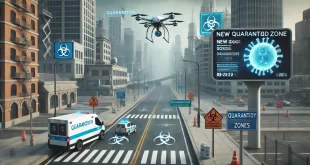A postdoctoral position is available to study the molecular mechanisms of devastating neurodevelopmental and neuroinfectious diseases (e.g. autism, Zika virus brain infection, cytomegalovirus-associated microcephaly, or potential SARS-CoV-2 (COVID-19) brain pathology), using cutting edge technologies such as stem-cell derived human neurons, human brain organoids and engineered KO/KI humanized mouse models, in the Department of Biomedical Sciences at the University of North Dakota in Grand Forks, ND, in the United States.
Our previous work, along with our collaborators, has led to multiple seminal discoveries, spanning basic and translational sciences, and has been featured by top scientific journals and media such as Nature Reviews Drug Discovery, the AAAS EurekAlert, Drug Target Review, The Independent, The Atlantic, The Daily Mail, Pharmazeutisch Zeitung and others. Examples of our work include:
(i) Viral Pathogenesis Mechanisms: We mapped out some of the essential machinery required for entry and egress of herpes virus into, and from, the cells using cell culture, mouse and ex-vivo human organ models (J Virol 2014, DOI:10.1128/JVI.02071-14; Nature Communications 2015, DOI:10.1038/ncomms7985; PLoS One. 2014, DOI:10.1371/journal.pone.0087302). We also investigated in depth the various distinct functions played by autophagy in innate immune responses to viral infections (Sci Rep 2015, DOI:10.1038/srep09730; Sci Rep 2015, DOI:10.1038/srep12985; PLoS One 2015, DOI:10.1371/journal.pone.0124646)
(ii) Antiviral Therapies Development: including a highly potent antiviral drug that showed dramatically greater efficacy over existing antivirals that are in medical use today, a therapeutic peptide and a nanotherapy (Sci Transl Med 2018; DOI:10.1126/scitranslmed.aan5861; J Virol 2015, DOI:10.1128/JVI.02979-14; J Immun 2016, DOI:10.4049/jimmunol.1502373)
(iii) Developing Human Brain Organoid Models to Study Neurodevelopmental Disorders: e.g. an optimized methodology to build an in-vitro human brain like 3D tissue (cerebral organoids, or “human mini-brains in a dish”) using advanced bioengineering techniques in human stem cells (Cell Transplant 2018, DOI:10.1177/0963689717752946; Neural Regen Res 2019, DOI:10.4103/1673-5374.249283; Cell Transplant 2019, DOI:10.1177/0963689718822811)
This postdoc position will address some of the most important questions in science and medicine today, using cutting-edge tools, including CRISPR-Cas gene editing, stem cells, and organoid and mouse models. This research is likely to give rise to paradigm-shifting fundamental discoveries and impactful publications in outstanding scientific journals. Therefore, this is a great opportunity for a highly motivated ambitious junior scientist who wants to advance to an excellent academic (tenure-track faculty), or attractive industrial leadership, position in the near future.
A PhD in neurobiology or related fields, earned or expected to be earned in the near future, is required. Skills and knowledge in neurobiology/neuroscience, mouse models, brain histology, imaging, electrophysiology, and protein biochemistry are needed. Critical and independent thinking skills and motivation (being self-driven) are essential for success in this position. A great range of freedom will be given to thoughtful mature scientists. An ideal candidate would be a confident neurobiologist well-equipped and published in neurobiology/neuroscience concepts and techniques, who wants to apply his/her expertise, learn about viral pathogenesis and stem-cell models, and bridge together these areas in investigating the viral causes of brain diseases, currently a “hot” topic in science.
To be considered for this position, please send your CV and a brief cover letter (1-2 paragraphs) to Prof. Abraam Yakoub at the lab email address TheYakoubLab@gmail.com. Should you have any questions about this position, please feel free to contact us.
 medjouel.com Study Non Stop
medjouel.com Study Non Stop


